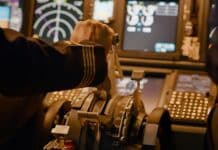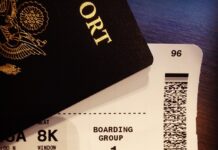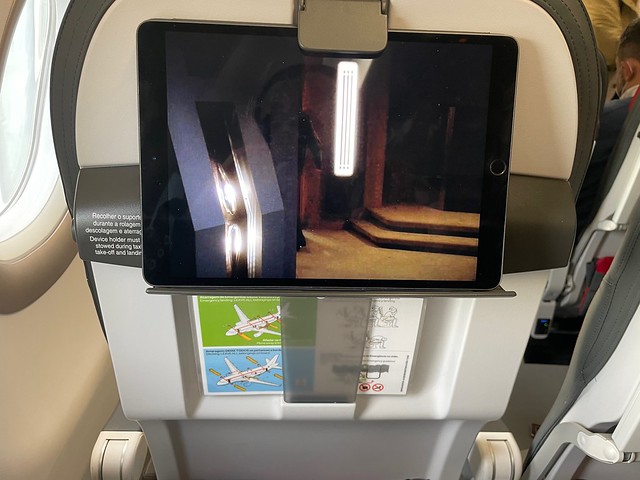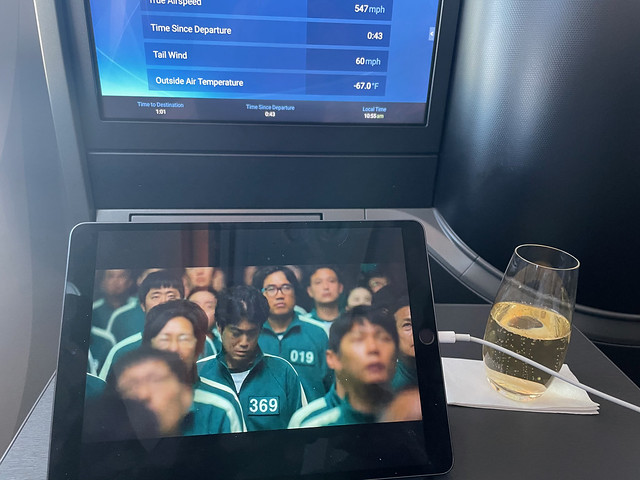Malaysia Airlines presented last week its new medium-haul cabin but more than the seat itself what made a lot of talk wasthe removal of TV screens, even in business class.
A decision that obviously surprises and even shocks some people. But after thinking about it for a long time, it is rather the opposite that surprises us today:what are these screens used for, especially in medium-haul?
Individual screens on medium-haul aircraft: an American-Asian controversy
It is understandable that Europeans are surprised by this controversy, unused as they are to finding screens on medium-haul aircraft. Except for the very rare cases where European airlines exceptionally put a long-haul aircraft on a medium-haul route for capacity reasons or for crew training, you will never find a medium-haul cabin with individual screens in Europe.
Never except on Turkish Airlines (excuse me…Türk Hava Yollari) which has two particularities on this market: both to propose screens in medium-haul in all travel classes but also to propose a specific business cabin and not simply a “eurobusiness” similar to the economy cabin with a neutralized central seat.
However, the fact is that this is the norm outside our borders, i.e. in Asia and often in the USA.
Towards the end of individual screens in medium-haul
Installing an IFE (In Flight Entertainment) system is expensive and adds weight to the aircraft. This is why it is not necessary in Europe, where medium-haul flights are often shorter than elsewhere.
But why did Malaysia make such a decision?
One thing is undeniable: customs have changed. Todaya large part of the passengers travel with their own screens(computer, tablet, mobile) and their own films and series.
Not only do passengers have larger screens than what is (or could be) offered by the airlines, especially in economy, but they also come with their own selection of content that corresponds more to their tastes than the generally insipid offer found on board.
Add to this the desire to save money and reduce the weight of the device and everything contributes to the fact that individual screens are gradually disappearing from the cabins. This decision, unacceptable 5 or 10 years ago, becomes totally possible becausethe individual screen is no longer a need for a growing number of passengers, at least not a vital one.
Airlines adapt their entertainment offer
The end of screens does not mean the end of in-flight entertainment systems.
Indeed, airlines that do not offer anything generally do not develop their content offer butpropose on their aircraft tablet holders so that the passenger installs his tablet as if he had an individual screen. This can be found, for example, on Air France’s A220s or TAP’s medium-haul fleet.
But some go further and, like Malaysia, don’t remove the entertainment offer but make it accessible in streaming via the aicraft’s wifi. More economical and no more cabling or screens to install. And if you don’t have a tablet or screen with you. It is more and more improbable but we see airlines lending them for the duration of the flight.
What future for individual screens?
From our point of view, this is a strong trend and in a few years we will no longer question the need for individual screens. At least not in all cases. We see two distinct situations.
In medium-haul
Airlines that used to offer IFE will gradually replace it with streaming devicesand let customers use their own screens.
This will affect the economy class for sure but maybe the business class will resist. A matter of status.
The airlines that were not offering anything will improve their offer. No need to invest in screens that they never wanted to invest in anyway, but they will install a streaming systemvia the aircraft’s wifi.
The passenger is the winner. And for the once that it comes out winner of an evolution of the service in flight we can rejoice…
In long haul
We do not see the screens disappearing in the front classes (Business, First) if only because their size is often larger than a tablet (especially in First), which brings a notable comfort. And then there is still a statutory issueand the price of the ticket to justify.
On the other hand in economy the question will eventually arise. When you have passengers equipped with devices that are larger, more qualitative and more comfortable than the screens integrated in the seats, and moreover with their own content, at some point the question of the relevance of the investment will arise.
The TravelGuys Experience
What do we think about it? We were talking about it the other night over dinner. As far as we look, we can’t remember the last time we used the individual screen of our seat.Of course in medium-haul flights (because most of the time there is no screen) but also in long-haul flights. And yet we fly almost all our flights in business or first, so with very large and comfortable screens. But it does not change anything about it. It’s a habit we’ve lost (or taken…).
From now on, the seat’s screen is used to follow the plane’s route, and for entertainment, it’s the iPad that rules.
We do not see for all that, we said it, screens totally disappearing from the front classes and we are perhaps a “special” clientele. But in economy…it really seems inevitable.
Bottom line
For most passengers, individual screens are not a necessity and this investment becomes questionable for the airlines. In any case in medium haul.
And you, what do you think? How would you react if tomorrow you found yourself without a screen on your next flight?
Photo : individual screen in plane by Tero Vesalainen via Shutterstock























